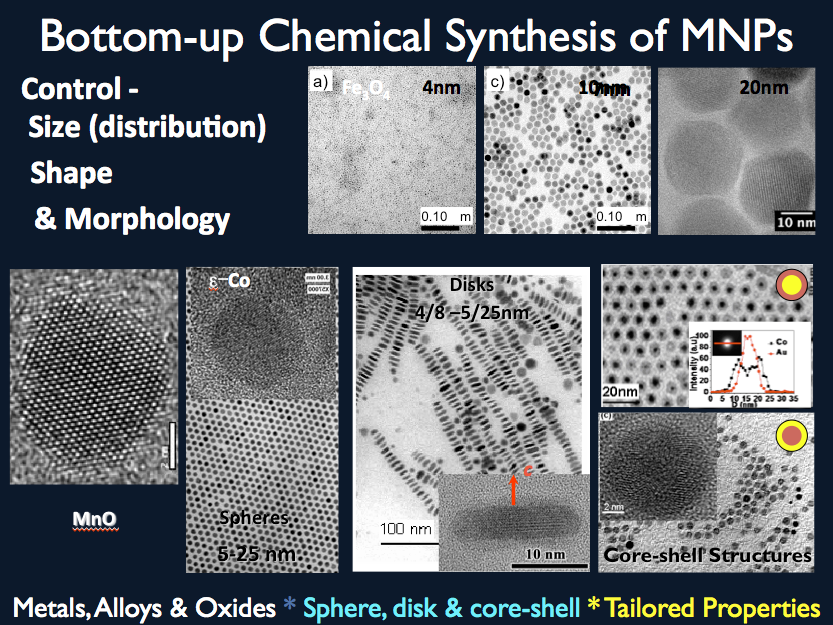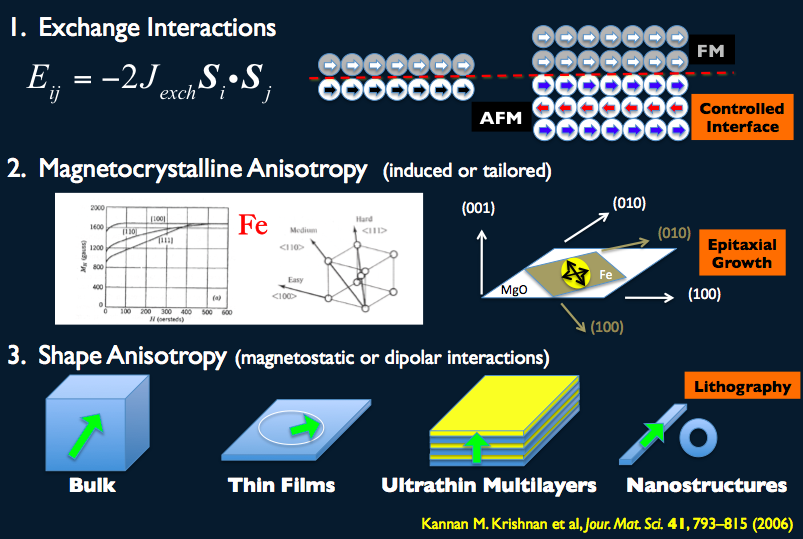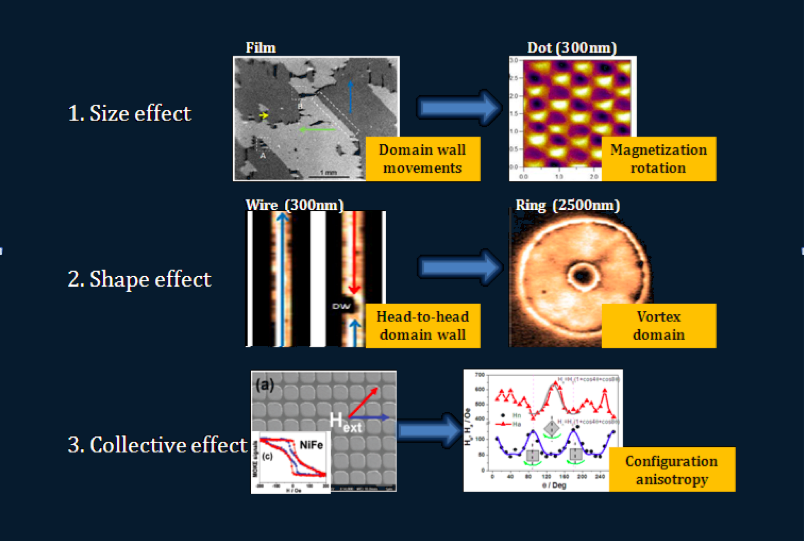We synthesize new materials and structures by epitaxial this film growth, colloidal synthesis of nanoscale particles with well-defined shape/size, tailored properties and controlled morphologies. Size and dimensionality also controlled by lithography.
We utilize colloidal synthesis methods to create nanoscale particles with well-defined shape/size(s), tailored properties and controlled morphologies. Kinetic and thermodynamic control of growth are correlated with real time in-situ dynamic TEM studies

References: Puntes, Krishnan, Alivsatos, Science 200; Yuping Bao's thesis; Marcella Gonzales' thesis; Yi-cheng Lee's thesis; RM Ferguson's thesis.
Thin Films and Heterostructures
We make thin films and heterostructures to study magnectic exchange interactions, magneto crystalline anisotrpy, and shape anisotropy.

Lithography
When the size of a magnetic entity approaches its critical lengths, e.g. the correlation length and the domain size, altered magnetization reversals, different from the bulk counterparts, will be observed. This will further change the functional properties of the devices including remanent magnetization (in magnetic sensors), coercivity (in storage devices), and the exchange bias (in spin-valves). Similar effects can be brought by tuning the shape of the magnetic structures due to the magnetostatic interactions (shape anisotropy). Typical functional structures, such as nanowires and nanorings, have been applied in 1D domain-wall MRAMs and ring-MTJs. In arrays of magnetic nanostructures, further complexity can arise due to the configuration anisotropy that caused by collective behaviors.
Technically, lithography techniques using different sources (electron, photon, and mechanical) are widely used to create the magnetic structures with desired sizes and shapes, with a capability on the scale down to sub–10 nm.



